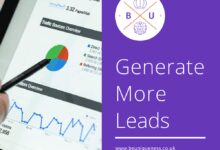Leads Meaning: 7 Powerful Insights You Must Know Now
Ever wondered what ‘leads meaning’ really is? It’s more than just potential customers—it’s the lifeblood of sales and marketing. Let’s break it down in simple, powerful terms.
Leads Meaning: The Core Definition and Why It Matters

At its most basic, the term leads meaning refers to individuals or organizations that have shown interest in your product or service. This interest can be demonstrated in various ways—filling out a contact form, subscribing to a newsletter, downloading a whitepaper, or engaging with your content online. Understanding the true leads meaning is crucial because it forms the foundation of any successful sales funnel.
What Exactly Is a Lead?
A lead is not yet a customer—but they’re on the path to becoming one. Think of a lead as a prospect who has taken a step toward your brand. Unlike cold audiences, leads have self-identified by providing some form of contact information or engagement signal. This makes them warmer, more receptive, and significantly more valuable than random website visitors.
- A lead could be someone who signs up for a free trial.
- It might be a visitor who clicks on a paid ad and lands on your offer page.
- Or it could be a social media user who messages your business for more info.
Each of these actions indicates intent—a key differentiator between a lead and a passive observer.
Why Understanding Leads Meaning Is Critical for Business Growth
Without leads, there are no conversions, no sales, and ultimately, no revenue. The leads meaning goes beyond mere definitions—it’s about recognizing opportunity. Every lead represents a chance to build a relationship, demonstrate value, and close a deal. Businesses that master lead generation and nurturing consistently outperform competitors.
“A business thrives not on how many people see its ads, but on how many leads it converts.” — Sales Expert Brian Tracy
Companies invest millions in digital marketing, content creation, and advertising—all with the primary goal of generating high-quality leads. The quality of these leads directly impacts the efficiency of sales teams and the return on marketing investment (ROMI).
leads meaning – Leads meaning menjadi aspek penting yang dibahas di sini.
Types of Leads: From Cold to Hot
Not all leads are created equal. The leads meaning evolves depending on the level of engagement and readiness to buy. Categorizing leads helps businesses prioritize efforts and tailor communication strategies effectively.
Cold Leads: The Starting Point
Cold leads are individuals who may fit your target demographic but haven’t shown direct interest in your offering. They might have been acquired through purchased lists, third-party data, or broad advertising campaigns. While they represent potential, cold leads require significant nurturing before they’re ready to engage.
- They often lack awareness of your brand.
- Communication must focus on education and trust-building.
- Conversion rates are typically low without proper follow-up.
For example, a person who attended an industry webinar where your company was mentioned briefly might be considered a cold lead. They know of you, but they’re not actively seeking your solution.
Warm Leads: Showing Genuine Interest
Warm leads have taken deliberate actions that indicate interest. They’ve likely visited your website multiple times, downloaded a resource, or engaged with your content. These individuals are further along the buyer’s journey and respond better to personalized outreach.
- They’ve opted into email lists or requested more information.
- They may follow your brand on social media or attend live demos.
- They’re open to conversations but may still be comparing options.
According to HubSpot, warm leads convert at 2–5 times higher rates than cold leads, making them a prime target for sales teams.
Hot Leads: Ready to Buy Now
Hot leads are the golden ticket. These prospects have demonstrated strong intent to purchase—perhaps by requesting a quote, scheduling a consultation, or adding products to their cart. They’re at the decision stage of the buyer’s journey and often require only a final push to convert.
leads meaning – Leads meaning menjadi aspek penting yang dibahas di sini.
- They’ve likely interacted with sales representatives.
- They may have already evaluated competitors.
- Timely follow-up is critical—delays can result in lost opportunities.
A hot lead might be a SaaS user who’s completed a 14-day trial and reached out to customer support with technical questions about upgrading. This level of engagement signals readiness to buy.
Leads Meaning in Sales vs. Marketing: Bridging the Gap
While both sales and marketing teams deal with leads, their interpretation of leads meaning can differ significantly. Recognizing these differences is essential for alignment and operational efficiency.
Marketing’s View: Lead Generation and Nurturing
From a marketing perspective, a lead is anyone who enters the funnel through inbound or outbound efforts. The focus is on volume, segmentation, and nurturing. Marketers use tools like landing pages, SEO, paid ads, and email campaigns to attract and qualify leads.
- Marketing Qualified Leads (MQLs) are those who’ve engaged with content but aren’t yet ready for sales contact.
- Nurturing sequences help move MQLs toward sales readiness.
- Success is measured by conversion rates, cost per lead, and lead quality.
For instance, a visitor who downloads an e-book on “Top CRM Trends in 2024” becomes an MQL. Marketing will continue nurturing them with related content until they show buying intent.
Sales’ View: Lead Conversion and Closing
Sales teams care less about volume and more about viability. To them, a lead is only valuable if it has a realistic chance of becoming a paying customer. Sales Qualified Leads (SQLs) are those who’ve been vetted and deemed ready for direct outreach.
- SQLs have budget, authority, need, and timeline (BANT criteria).
- Sales reps prioritize SQLs for calls, demos, and proposals.
- Success is measured by close rates and revenue generated.
When marketing passes an SQL to sales—say, a company executive who requested a pricing sheet—the sales team takes over with personalized engagement.
leads meaning – Leads meaning menjadi aspek penting yang dibahas di sini.
“Alignment between marketing and sales on leads meaning can boost revenue by up to 20%.” — Source: Salesforce State of Sales Report
The Lead Lifecycle: From First Touch to Customer
Understanding the leads meaning also involves mapping the journey a lead takes from initial awareness to becoming a loyal customer. This lifecycle is dynamic and requires coordination across departments.
Stage 1: Awareness and Acquisition
This is where leads enter the funnel. They discover your brand through search engines, social media, ads, referrals, or content. The goal here is visibility and capturing attention.
- Use SEO-optimized blog posts to attract organic traffic.
- Leverage paid ads for targeted reach.
- Offer lead magnets like free tools or templates.
For example, a small business owner searching for “best accounting software for startups” might land on your blog post comparing top tools. If they download your comparison checklist, they become a lead.
Stage 2: Engagement and Nurturing
Once acquired, leads need consistent engagement. This stage focuses on building trust, delivering value, and guiding them toward a decision.
- Send automated email sequences with educational content.
- Invite leads to webinars or live Q&A sessions.
- Use retargeting ads to stay top-of-mind.
Nurturing isn’t about pushing a sale—it’s about being helpful. A well-nurtured lead is 70% more likely to convert, according to MarketingCharts.
Stage 3: Conversion and Handoff
When a lead shows buying signals—like requesting a demo or asking for pricing—it’s time for conversion. Marketing hands off the lead to sales, and the focus shifts to closing.
leads meaning – Leads meaning menjadi aspek penting yang dibahas di sini.
- Ensure smooth handoff with clear lead scoring and CRM integration.
- Equip sales with insights from marketing (e.g., content viewed, engagement history).
- Personalize outreach based on lead behavior.
A seamless transition reduces friction and increases conversion rates. Poor handoffs can result in lost leads and wasted marketing spend.
Lead Scoring: Prioritizing the Right Leads
With potentially hundreds or thousands of leads entering your system, how do you know which ones deserve immediate attention? That’s where lead scoring comes in—a method of assigning values to leads based on their behavior and profile.
What Is Lead Scoring?
Lead scoring is a systematic way to rank leads based on their likelihood to convert. It combines demographic data (job title, company size) with behavioral data (website visits, email opens, content downloads) to create a numerical score.
- High scores indicate hot leads.
- Low scores suggest cold or unqualified prospects.
- Scores help automate routing and prioritization.
For example, a lead who works in IT management (demographic fit) and has visited your pricing page three times this week (behavioral signal) would receive a high score.
How to Build an Effective Lead Scoring Model
Creating a lead scoring model requires collaboration between marketing and sales. Here’s a step-by-step approach:
- Define ideal customer profiles (ICPs): Identify characteristics of your best customers.
- Assign positive points for engagement: +10 for downloading a case study, +20 for attending a demo.
- Assign negative points for disengagement: -5 for unsubscribing, -10 for inactive for 30 days.
- Set thresholds: Leads scoring above 50 become SQLs; below 30 go into nurturing.
Tools like Marketo, HubSpot, and Salesforce offer built-in lead scoring features to streamline this process.
leads meaning – Leads meaning menjadi aspek penting yang dibahas di sini.
“Companies using lead scoring see a 77% increase in lead conversion rates.” — Source: MarketingProfs
Common Lead Generation Strategies
Now that we’ve explored the leads meaning in depth, let’s look at proven strategies to generate high-quality leads. These methods are used by top-performing businesses across industries.
Content Marketing and SEO
Creating valuable, search-optimized content attracts organic traffic and converts visitors into leads. Blog posts, guides, videos, and infographics answer common questions and position your brand as an authority.
- Use keyword research to identify what your audience is searching for.
- Gate premium content behind lead capture forms (e.g., “Download our free guide”).
- Optimize landing pages for conversions with clear CTAs.
A well-executed content strategy not only generates leads but also builds long-term brand equity.
Paid Advertising (PPC and Social Ads)
Pay-per-click (PPC) campaigns on Google Ads and social media platforms like LinkedIn and Facebook allow precise targeting. You can reach decision-makers based on job title, industry, interests, and more.
- Use compelling ad copy with strong CTAs.
- Direct traffic to dedicated landing pages, not your homepage.
- Retarget visitors who didn’t convert the first time.
According to WordStream, the average conversion rate for Google Ads across industries is 3.75% for search and 0.77% for display—making optimization crucial.
Email Marketing and Lead Nurturing Campaigns
Email remains one of the highest ROI marketing channels. By building a list of subscribers and sending targeted messages, you can nurture leads over time.
leads meaning – Leads meaning menjadi aspek penting yang dibahas di sini.
- Segment your list based on behavior and preferences.
- Use automation to send welcome series, educational content, and re-engagement emails.
- Include clear CTAs to move leads to the next stage.
A study by Campaign Monitor found that segmented email campaigns generate 30% more opens and 50% more clicks than non-segmented ones.
Measuring Lead Quality and Performance
Generating leads is only half the battle. The real challenge lies in measuring their quality and the effectiveness of your lead generation efforts. Without proper metrics, you risk wasting resources on low-value prospects.
Key Metrics to Track
To evaluate the success of your lead strategy, monitor these essential KPIs:
- Conversion Rate: Percentage of leads that become customers.
- Cost Per Lead (CPL): Total spend divided by number of leads generated.
- Lead-to-Customer Rate: How many leads actually close.
- Average Lead Score: Indicates overall lead quality.
- Time to Conversion: How long it takes a lead to move through the funnel.
These metrics help identify bottlenecks and optimize campaigns for better results.
Using CRM and Analytics Tools
Customer Relationship Management (CRM) systems like Salesforce, HubSpot, and Zoho CRM are indispensable for tracking leads. They provide visibility into lead sources, engagement history, and conversion paths.
- Integrate your CRM with marketing automation tools.
- Use dashboards to monitor real-time performance.
- Conduct regular audits to clean up outdated or duplicate leads.
Analytics platforms like Google Analytics and Mixpanel offer deeper insights into user behavior, helping refine targeting and messaging.
leads meaning – Leads meaning menjadi aspek penting yang dibahas di sini.
“Data-driven companies are 23 times more likely to acquire customers.” — McKinsey & Company
What is the basic leads meaning?
The basic leads meaning refers to individuals or organizations that have shown interest in your product or service by providing contact information or engaging with your brand. They are potential customers at the early stage of the buying journey.
What are the different types of leads?
Leads are typically categorized as cold, warm, or hot. Cold leads have minimal engagement, warm leads have shown interest, and hot leads are ready to buy. Marketing and sales teams also classify them as MQLs (Marketing Qualified Leads) or SQLs (Sales Qualified Leads).
How do you generate high-quality leads?
High-quality leads are generated through targeted strategies like content marketing, SEO, paid advertising, email campaigns, and social media outreach. Offering valuable lead magnets and using lead scoring helps attract and prioritize the best prospects.
leads meaning – Leads meaning menjadi aspek penting yang dibahas di sini.
Why is lead nurturing important?
Lead nurturing builds trust and keeps your brand top-of-mind. Most leads aren’t ready to buy immediately—consistent, value-driven communication increases the chances of conversion over time.
What tools can help manage leads effectively?
CRM platforms (e.g., Salesforce, HubSpot), marketing automation tools (e.g., Marketo, ActiveCampaign), and analytics software (e.g., Google Analytics) are essential for tracking, scoring, and converting leads efficiently.
Understanding the leads meaning is not just about defining a term—it’s about unlocking the engine of business growth. From identifying cold prospects to converting hot leads, every stage of the journey requires strategy, precision, and empathy. By aligning marketing and sales, leveraging data, and using proven lead generation tactics, businesses can turn interest into income. Remember, a lead is more than a name and email—it’s a relationship waiting to happen. Master the art of lead management, and you’ll master the future of your business.
Further Reading:



